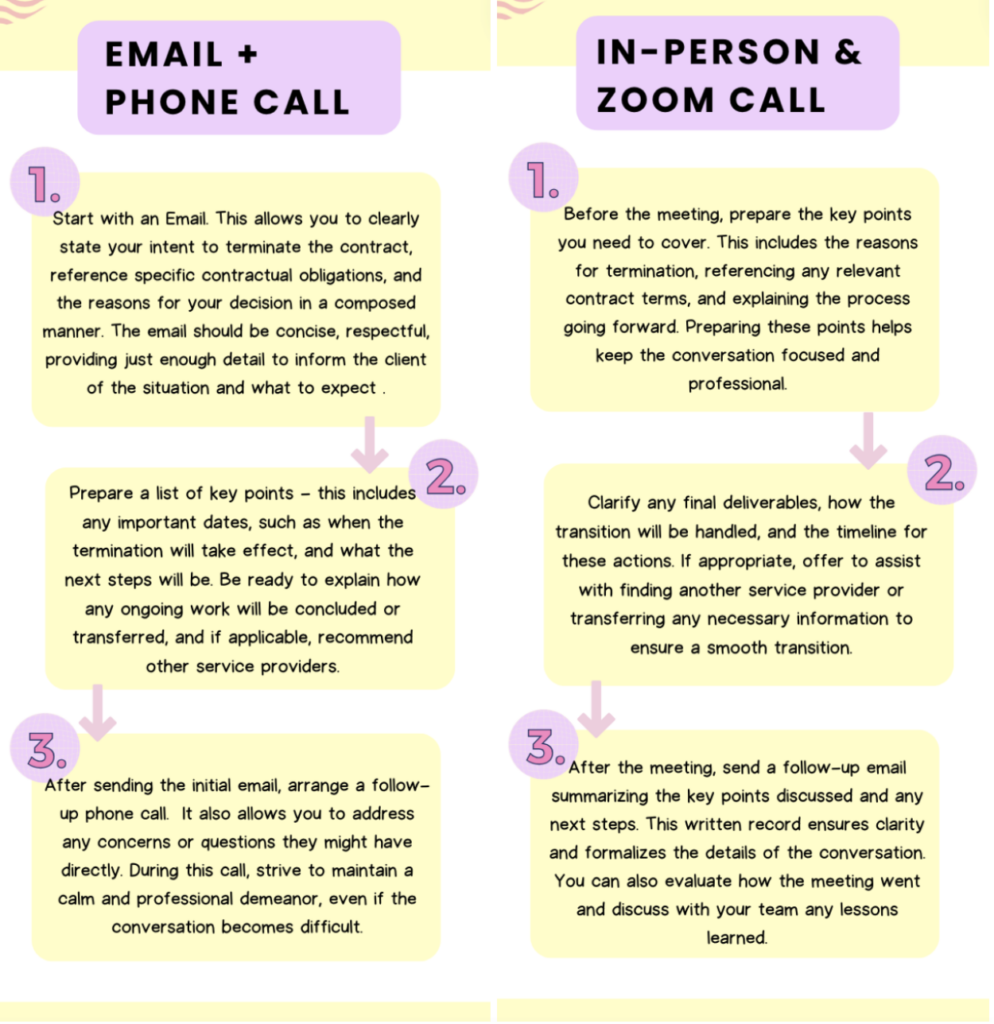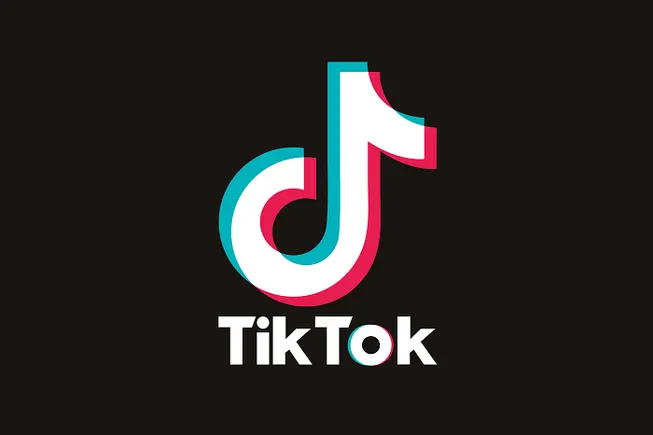How to Fire a Client without Burning Bridges: A Guide for Agencies
Today, some industries might still embrace the rule “The customer is always right,” but the digital marketing ecosystem operates differently. When a particular client’s demands or behaviors overshadow the enthusiasm and productivity of your team, it is time to...

Today, some industries might still embrace the rule “The customer is always right,” but the digital marketing ecosystem operates differently. When a particular client’s demands or behaviors overshadow the enthusiasm and productivity of your team, it is time to consider how to fire them.
Knowing when and how to distance your agency from a “toxic” client is essential in an industry fueled by innovation and teamwork.
Let’s explore effective strategies for digital marketing agencies to gracefully fire a client and transition away from challenging client relationships.
Setting Boundaries for a Productive Digital Agency Relationship
In digital marketing agencies, you absolutely can encounter clients who may push boundaries; it is a normal part of business interactions. However, when a client exhibits behaviors such as setting unrealistic expectations, making excessive demands, or showing a lack of respect, it’s clear that you are dealing with a difficult situation.
At that point, setting firm boundaries (with a contract) is crucial to protecting team well-being and ensuring that the work environment remains healthy – no burnouts, no unacknowledged scopes. In addition to helping maintain fair compensation for the scope of work, boundaries urge professional respect and encourage clients to trust agency expertise.
According to a report by Forbes, businesses fire clients most frequently when the client disrespects the team’s time and work. Andrey Doichev, founder of Inc and Go, explains as follows:
This is why developing robust contracts is crucial for any business owner since it helps to establish the expectations of your working relationship, forming boundaries around your communication standards and expected results. Pay close attention to the contract edits your client requests since these red flags could point to future points of friction that you’ll want your team to manage proactively.
When faced with toxic client relationships despite clear boundaries, you may need to part ways professionally while focusing on reputation management in the industry.
Let’s review the red flags that may lead you to firing.
How to Be Sure That You Must Fire a Client
Seems sad, but deciding to part ways with a “toxic” client is a significant decision for any digital agency, especially considering such clients can drain your time, motivation, and financial resources.
In other words, when a client requires a disproportionate share of your team’s resources relative to the financial return they provide, this can impede your ability to effectively serve other clients and stifle your agency’s growth.
Besides, firing a client raises several crucial questions: When should you seriously start thinking about it? What are the clear red flags? And, is there ever a situation where tolerating the difficulties might be better than opting to terminate the relationship? Understanding these aspects is essential for maintaining the credibility for a digital agency, ensuring that decisions are made in the best interest of both the agency and its reputation.
Obvious Signs of Bad Clients
According to Inc and Go recent report, the toxic clientele is characterized by the following signs:
These signs are true for the customer base of digital agencies. In this section, we’ll be discovering the signs “silently” showing you that you’re working with a bad client.
Unrealistic Demands
72 percent of customers want immediate and accurate service—it’s a home truth. However, on some occasions, clients can break the boundaries and become very demanding.
If, despite your best efforts to explain, there is still a disconnect between the client’s expectations and what your agency can accomplish, it might be a sign that the partnership is not viable. Continuous misalignment can lead to ongoing frustration for both parties.
Mistreatment
60% of employees have quit their jobs due to not tolerating toxic clients, and it’s true for the digital marketing employee base. In other words, mistreatment by clients is a serious issue that can significantly impact the morale and productivity of a digital agency’s team.
Insults, belittling comments, impossible deadlines, inappropriate jokes, ignoring input from team members, treating staff as inferior, and more. Mistreatment and manipulative actions can come in various forms. It’s important to recognize and address such behaviors promptly to maintain a healthy work environment and protect your agency’s integrity.
Additionally, the well-being of your team is paramount. If a client’s behavior consistently results in stress, dissatisfaction, or burnout among your staff, it’s essential to consider the broader impact on your team’s health and your agency’s culture.
Micromanagement
Another red flag is micromanagement, particularly when it becomes excessive and impedes the normal workflow and creativity of your digital agency.
When a client constantly oversees and dictates every small detail, it can severely limit the team’s ability to apply their expertise. What’s more? Micromanagement often involves numerous revisions, excessive oversight, and constant feedback that can disrupt work processes. This not only slows down project timelines but also leads to increased frustration among team members.
Furthermore, the foundation of every client-agency relationship is trust. It is a sign of low trust in the agency’s ability to deliver the desired outcomes when a client feels the need to micromanage. This may damage the bond between you two and make it challenging to form a cooperative partnership.
Late Payments
Let’s mention the most common challenge digital marketing agencies face: late payments.
Consistently delayed payments disrupt cash flow, complicate financial planning, and ultimately jeopardize the stability of your business. And yes, it is a huge red flag, leading you to consider parting ways.
Even though establishing clear payment terms and including them in the contract is a good call, consistently having to follow up on late payments can strain the client-agency relationship.
No Support & No Teamwork
Achieving good results in a digital agency hinges significantly on effective collaboration and teamwork, which should include active participation and support from clients.
When clients are engaged and supportive, it enhances project efficiency, improves the quality of outcomes for your agency, and leads to higher customer satisfaction. Conversely, a lack of engagement or support from clients can lead to misunderstandings, hinder project progress, and increase stress among agency team members.
How to Fire a Client (in a Healthy & Polite Way)
As you can see above, firing a client is sometimes necessary to maintain the health and integrity of your business, even though it’s not an easy decision.
When you need to end a professional relationship, doing so healthily and politely is crucial to preserving your agency’s online reputation. It also helps you leave the door open for potential future collaborations.
Here is a quick guide on how to fire a client respectfully:
#1 Check Your Contract and Terms
Before initiating any discussions about ending the relationship, carefully review the contract or engagement letter signed at the beginning of your teaming up. Look specifically for any terms related to the termination of services. This includes noticing any required notice periods, conditions that must be met, or any other stipulations concerning how either party may terminate the agreement.
If your contract specifies a particular process or notice period for termination, make sure these are followed meticulously.
#2 Decide Your Way to Communicate
Once you are clear on the contractual terms, how you communicate this decision is crucial for maintaining professionalism and ensuring clarity.
You can contribute to making the end of a client relationship as easy and painless as possible, maintaining your professional integrity, and possibly creating future opportunities, by carefully planning and implementing your communication strategy.
Here are two ways that you can use as an example or a template when deciding your format:

#3 Clearly State the Reasons
If a client relationship isn’t working out, laying out the reasons clearly can help both sides understand that the decision isn’t personal but practical. It’s all about ensuring everyone is on the same page and knows this isn’t a snap decision.
And yes, by clearly explaining why the relationship isn’t working, you not only protect your digital agency in case things get sticky but also uphold a professional standard that speaks volumes to other clients and your team.
This isn’t just about cutting ties; it’s about setting the record straight and moving on without any hard feelings.
#4 Keep Emotions Out, Be Rational
When it’s time to part ways with a client, it’s important to stay calm, rational, and polite all the time.
Stick to the facts and give clear reasons for ending the relationship, avoiding any emotional outbursts or name-calling. This approach not only maintains your agency’s professionalism but also protects your integrity during what can be a tense discussion.
Additionally, if the client attempts to provoke you or derail the conversation with personal jibes, keep your cool; as you already know, engaging in a heated exchange or stooping to personal attacks can undermine your professional standing and potentially escalate the situation unnecessarily. Instead, focus on articulating your points clearly, and emphasizing that the decision is based on business considerations, not personal feelings.
#5 Finish the Project and Give Clients a Referral
Leaving a client in the middle of an important project is not ethical at all and can harm your reputation.
However, if you need more time to finish the project, take the responsibility to connect them with a reliable service partner who can take over. This shows professionalism and care for the client’s needs while maintaining your agency’s good standing.
Bonus: Termination Mail Templates
Example 1: Client Expectations Misalignment
Subject: Termination of Services
Dear [Client’s Name],
We hope you are well. After much reflection, we have decided that [Your Company Name] will no longer be able to provide services to [Client’s Company Name] effective [Termination Date].
Despite our best efforts, we have not been able to align our service offerings with your expectations. We believe this decision will allow both of us to find more suitable partnerships moving forward.
We will ensure all current projects are wrapped up, and we are happy to assist with the transition to a new provider to ensure a smooth handover.
Thank you for your understanding, and we wish you continued success.
Best regards,
[Your Name]
[Your Company Name]
[Contact Information]
Example 2: Payment Issues
Subject: Termination of Services
Dear [Client’s Name],
We hope this email finds you well. Due to ongoing payment issues, we regret to inform you that [Your Company Name] will be ceasing services for [Client’s Company Name] effective [Termination Date].
While we value the opportunity to work with you, timely payments are crucial for maintaining our service quality and operations. As we have experienced repeated delays, we believe it is in both of our best interests to end our professional relationship at this time.
We will complete all current deliverables and provide the necessary support to transition your projects to a new provider.
Thank you for your understanding, and we wish you the best in your future endeavors.
Sincerely,
[Your Name]
[Your Company Name]
[Contact Information]
Example 3: Resource Constraints
Subject: Termination of Services
Dear [Client’s Name],
We hope you are doing well. After careful consideration, we are writing to inform you that [Your Company Name] will no longer be able to provide services to [Client’s Company Name] as of [Termination Date].
Due to recent changes in our company, we are refocusing our resources and priorities. Unfortunately, this means we can no longer support your projects effectively.
We are committed to completing all current projects and will provide support during the transition to ensure you find a suitable replacement.
Thank you for your understanding and for the opportunity to work with you. We wish you and your company continued success.
Warm regards,
[Your Name]
[Your Company Name]
[Contact Information]
Example 4: Toxic Client Relationship
Subject: Termination of Services
Dear [Client’s Name],
We hope this message finds you well. After much deliberation, I regret to inform you that [Your Company Name] will be terminating our services for [Client’s Company Name] effective [Termination Date].
This decision is based on repeated challenges in our working relationship that have impacted our ability to deliver our best work. We need to maintain a positive and productive environment for our team, and we believe this step is necessary.
We will complete all active projects and provide the necessary support to ensure a smooth transition to another provider.
Thank you for your understanding, and we wish you all the best in your future endeavors.
Best regards,
[Your Name]
[Your Company Name]
[Contact Information]

 AbJimroe
AbJimroe 












_80.jpg)














.jpg)




